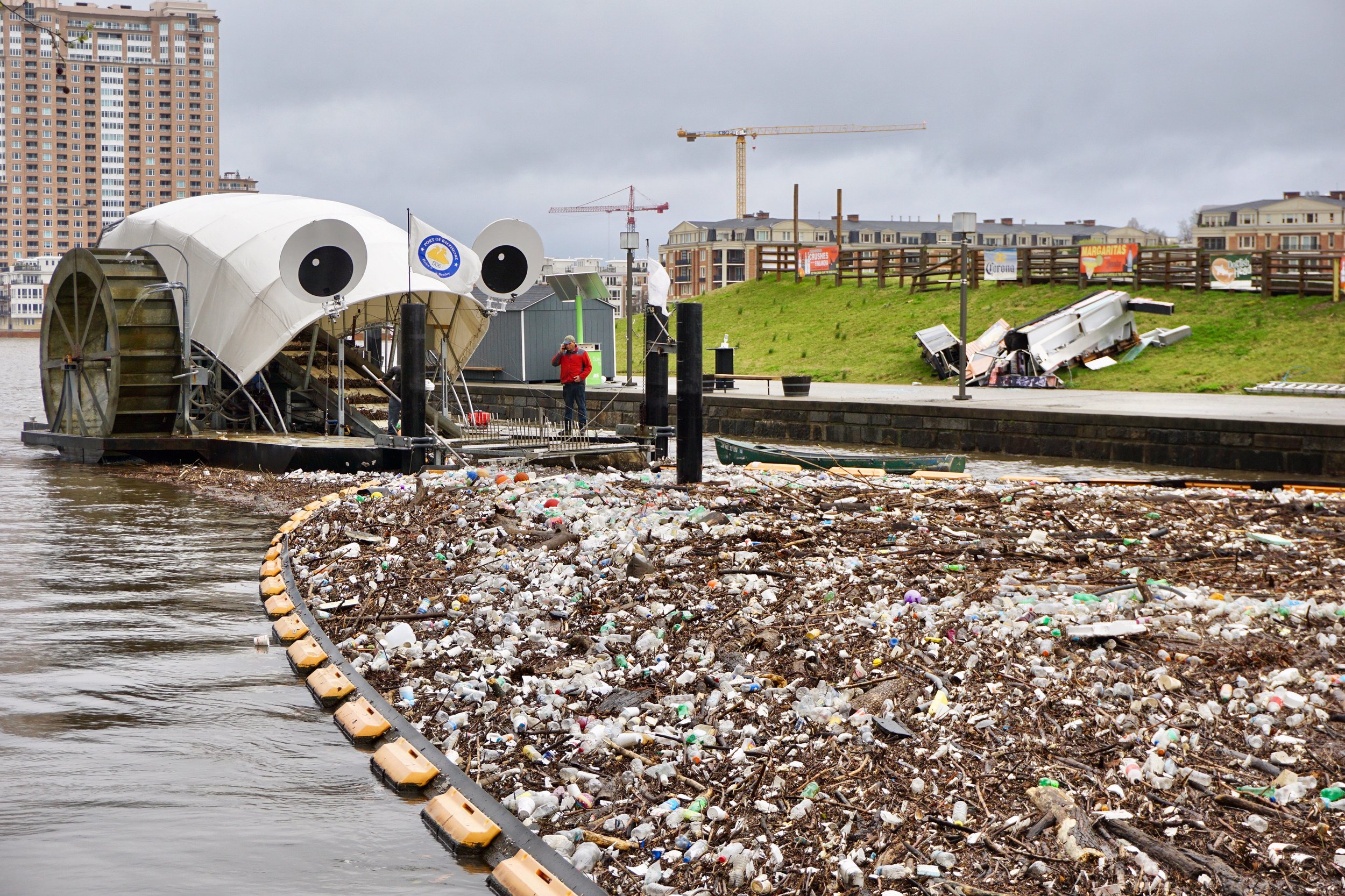
Request an EcoTour

Request a Healthy Harbor EcoTour
Sign up for an EcoTour today! Our tours are for all ages and can be customized to fit your interests. We'll be in touch to schedule and plan your EcoTour experience.

Tour Highlights & Landmarks
-

National Aquarium Floating Wetlands
The National Aquarium has installed two floating wetlands planted with native species that provide a habitat for marine life and help to clean the water.
Every time it rains, pollutants from lawns, roads, and other urban surfaces are swept into our streams and harbor. Fortunately, we’re able to battle this runoff with the Floating Wetlands, an efficient tool for cleaning polluted water. As the plants of the wetlands grow, they remove nutrient pollution and store it in their leaves while adding life-giving oxygen to the water. At the same time, their roots provide a home for microorganisms that feed on pollution. The only element needed for all this to work? Simple sunlight.
-

Oyster Gardens
Baltimore has gone from being the oyster canning capital of the world in the 1800s to having an oyster population of just 1% of historic levels. At their peak, there were enough oysters to filter all of the Chesapeake Bay every 3 days. Today, volunteers who are part of the Great Baltimore Oyster Partnership grow Eastern Oyster spat-on-shell in cages around the Inner Harbor. The cages provide a safe space for the spat to grow – protected from predators and near the surface.
After nine months of growth, the mature oysters are transported to a protected sanctuary near Fort Carroll in the tidal Patapsco River where they live out their lives.
-

Rain Garden
Pierce’s Park is a free public park located adjacent to the Columbus Center in the heart of the Inner Harbor. The park features two native rain gardens, a bio-retention rain garden, original sculptures, a musical fence, and a living willow tunnel. Rain gardens help reduce storm water runoff by slowing down the flow of water through absorption and naturally filtering it through the soil. Native plants are significant because they are adapted to the local climate and soil conditions where they naturally occur.
Native plant species provide nectar, pollen, and seeds that serve as food for native butterflies, insects, birds and other fauna. The native rain gardens feature Echinacea, Black Eyed Susan’s and native grasses such as Purple Love Grass that all provide habitat for swallowtails, bees, and larvae.
-

Mr. Trash Wheel
The Inner Harbor Water Wheel, or “Mr. Trash Wheel”, uses solar panels and the current of the Jones Falls River to collect litter and debris entering the Inner Harbor. The river’s current provides power to turn the water wheel, which lifts trash and debris from the water and deposits it into a dumpster barge.
When there isn’t an adequate enough current, a solar panel array provides additional power to keep the machine running. When the dumpster is full, it is towed away by boat, brought to an incinerator, and a new dumpster is put in place. The trash and debris collected by the Water Wheel is counted and recorded into five categories: plastic bottles, polystyrene containers, cigarette butts, glass bottles, grocery bags, chip bags, and the dumpster’s overall weight. This information is available for public viewing on MrTrashWheel.com

Waterfront Partnership of Baltimore Inc. is a non-profit organization dedicated to enhancing and promoting the waterfront district, parks, and public spaces. We create welcoming programs, events, and recreational experiences while working toward a healthy harbor. We are committed to fostering connections among diverse communities to ensure equitable access to our blue and green space

